Volunteers are essential to the management of Nature Reserves. Kenfig Nature Reserve has two groups of volunteers, meeting every week. One group meets on Wednesdays to help with monitoring and identification of species, and the other on Thursdays to carry out practical conservation tasks such as scrub removal, cutting back of reeds and invasive plants on the pool, and repairs to paths and boardwalks.
In this post, I will concentrate on Moth Monitoring. We use two moth traps and we leave these out on Tuesday nights. We use egg boxes or egg trays inside the traps for several reasons. The boxes are constructed from textured cardboard, which attracts moths because of its similarity to natural roosting spots like tree crevices and deadwood. The individual compartments allow a moth its own space where it feels more secure than out in the open. Being attracted by the light, most moths attempt to roost as if it were daylight. The trays also give the trap a 3D perspective, offering more places for moths to settle down and, importantly, it makes counting and identifying the whole trap contents much easier.
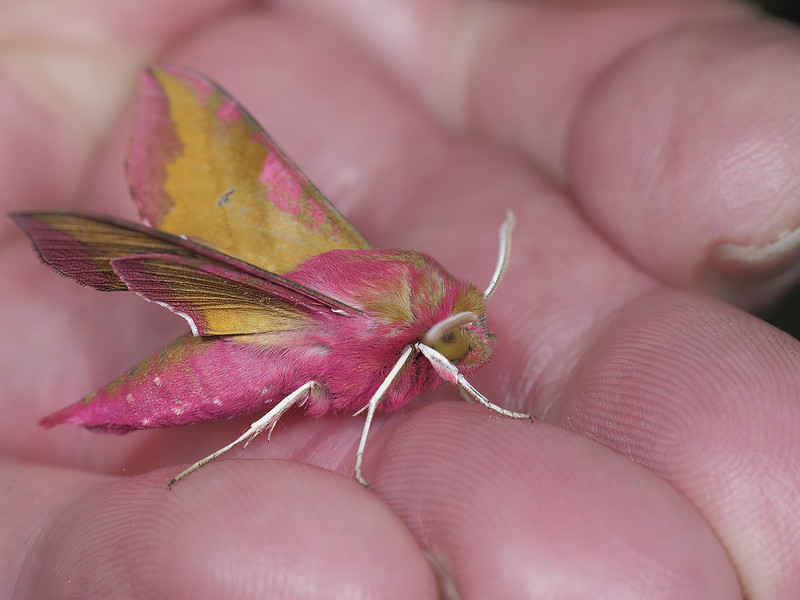
Small Elephant Hawk Moth – Deilephila porcellus
A moth in the hand is worth two in the bush. That’s certainly the case with this beautiful, colourful and vibrant moth.
Olympus 60mm f2.8 Macro on Olympus E-M1 Mark II – f8.0 / 1/200 / ISO 200
Hopefully, when we collect the traps first thing on Wednesday morning, we have a bounty of moths, all ready to inspect. In the UK, moth traps are especially effective between May and October, and the height of the moth season is June and July. That said, moths are on the wing every night of the year, so it’s always intriguing to see what one can catch! On a good night, we may have hundreds of moths to identify, even micro moths, but don’t worry, we release them all shortly after!
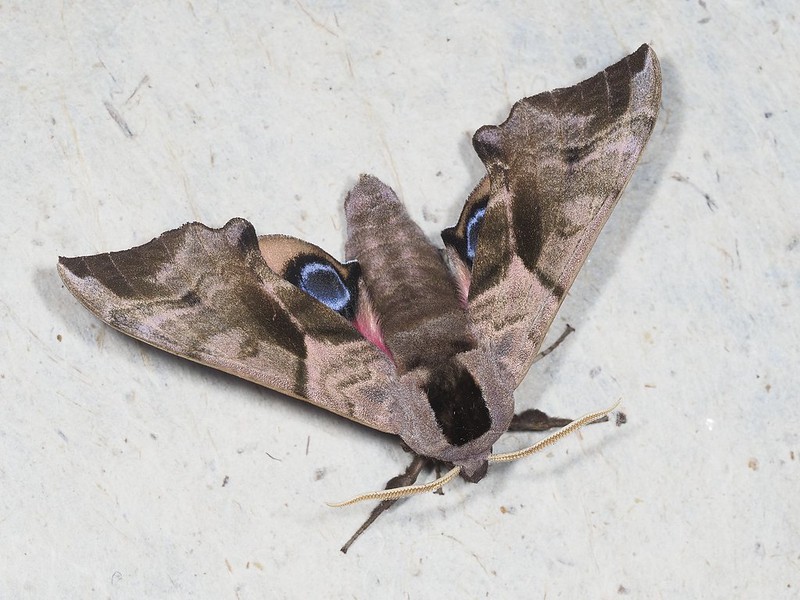
Eyed Hawkmoth – Smerinthus ocellata
A lovely fresh specimen with pinkish forewing and large eye-spots on pinkish hindwing. When disturbed, it exposes these and rocks to and fro, which has been proved to deter insectivorous birds.
Olympus 60mm f2,8 Macro on Olympus E-M1 Mark II – F11 / 1/60 / ISO 200
In the early morning, researchers photograph the trapped moths and release them shortly after identification and photography. Moths are fairly docile around dawn, when it is relatively cool and not bright enough for them to feel exposed and try to hide. This makes it easier to go through the trap and record its contents. Moths placed onto surrounding vegetation or on a tree trunk will often sit quietly, which gives the ideal opportunity to take a picture.
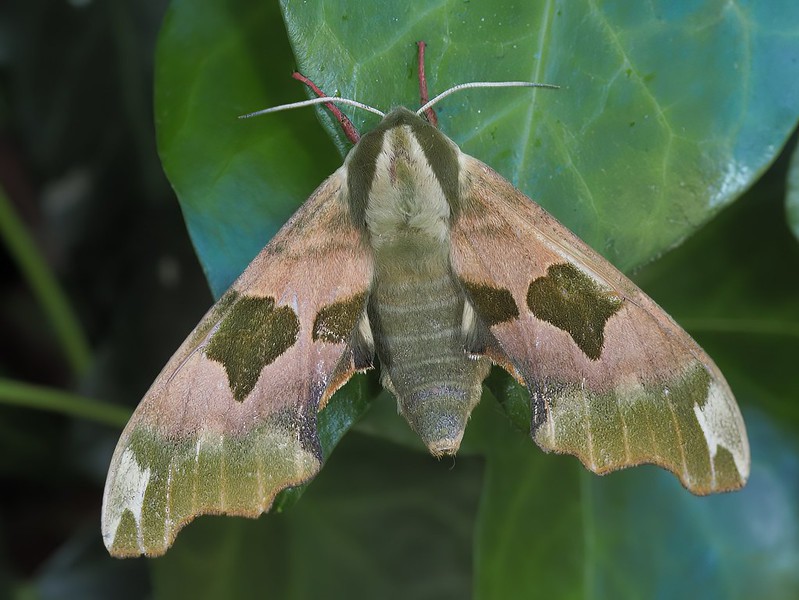
Lime Hawk-Moth – Mimas tiliae
A pinky-buff colour, with greyish-green at the tip and the base of the wings, and two large, dark green patches half way along the forewings. It holds its wings to form the shape of a right-angled triangle. The back edge of the wing is scalloped to aid camouflage.
Olympus 60mm f2.8 Macro on Olympus E-M1 Mark II – f8.0 / 1/60 / ISO 800
From the minuscule, no bigger than my thumbnail, micro-moths – to the majestic, as big as my fist, Hawk Moths – there’s an impressive diversity of species to be found at Kenfig Nature Reserve. Below is a selection of the moths monitored during 2023. As I hope you will agree, and despite all the reported climate and environmental dangers faced by wildlife, the reserve’s unique habitat is a welcome heaven for much of our endangered wildlife. Last but not least, our precious moths. Let’s hope that the authorities effectively manage and preserve this precious habitat in 2024 and for many more years to come.
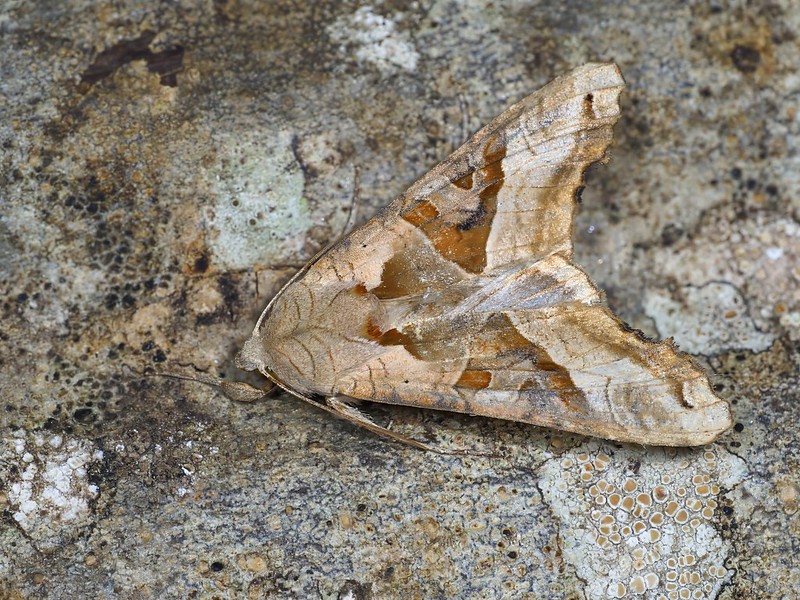
Angle Shades – Phlogophora meticulosa
Resting with the wings folded longitudinally, looking very much like a withered autumn leaf.
OM 90mm f3.5 on Olympus E-M1 Mark II – f11 / 1/200 / ISO 200
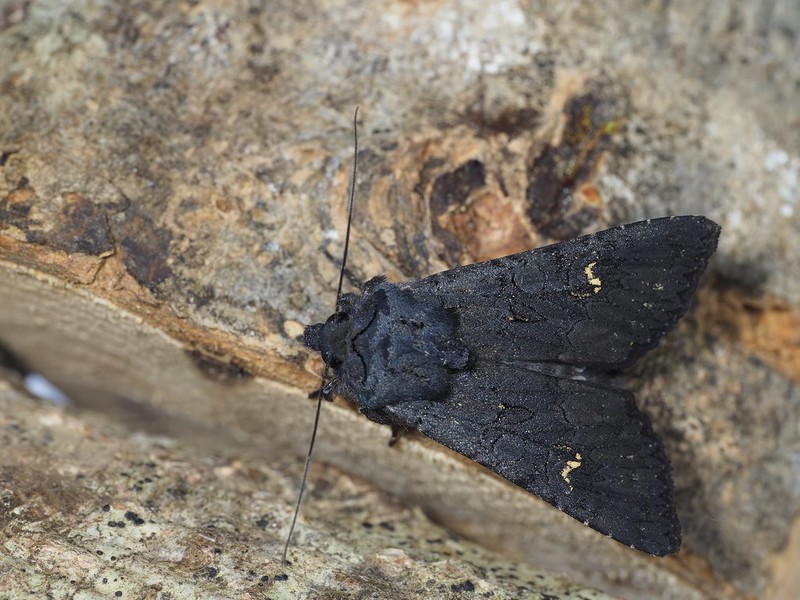
Black Rustic – Aporophyia nigra
For many British moth enthusiasts the appearance of Black Rustics at light traps in the autumn is a depressing sign that the summer has gone and winter is on its way. The Black Rustic is unusual in being one of the few British moths that is almost entirely black which makes it easily identifies.
OM 90mm f3.5 on Olympus E-M1 Mark II – f11 / 1/250 / ISO 200
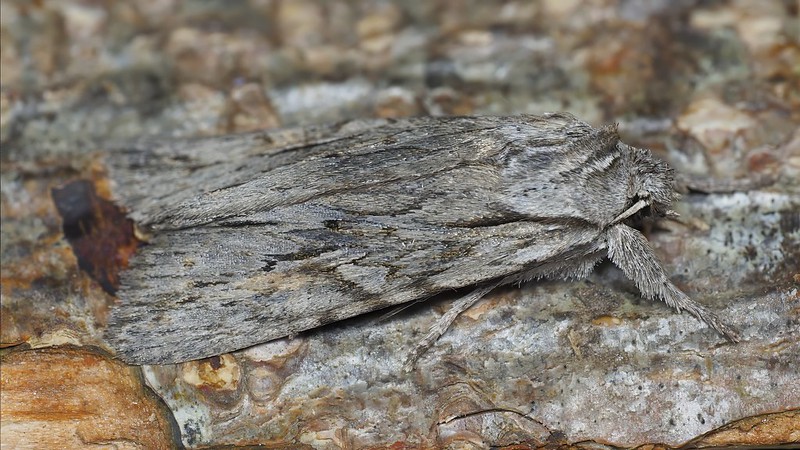
Blair’s Shoulder-knot – Lithophane leautieri
This moth is a recent colonist, being first recorded in Britain in 1951 on the Isle of Wight. Since then it has spread rapidly north, as far as Scotland. It has subtle shades of warm and cool grey scales that makes it hard to spot when resting on bark.
OM 90mm f3.5 0n Olympus E-M1 Mark II – f11 / 1/250 / ISO 200
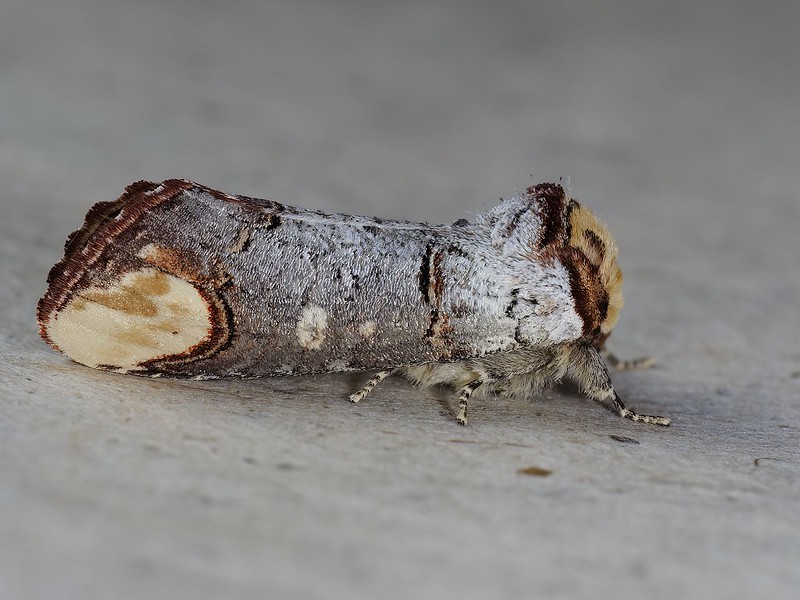
Buff-tip – Paler bucephala
A master of disguise, it’s so easy to miss this little moth. Holding its wings against its body the Buff-tip looks remarkably similar to a birch twig. It is mainly silvery-grey in colour, with a square-cut, Buffy head, and a buff patch at the end of the wings which gives it the common name.
OM 90mm f3.5 Macro on Olympus E-M1X – f11 / 1/30 / ISO 200
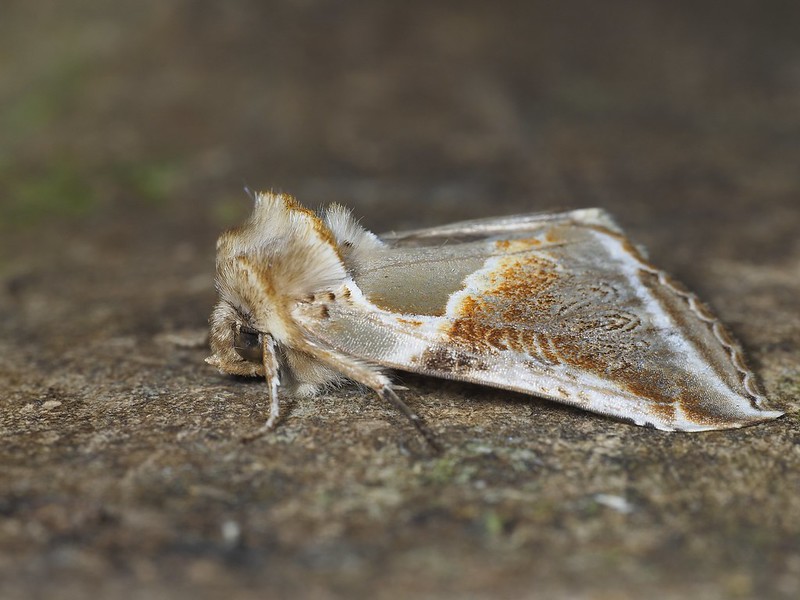
Buff Arches – Habrosyne pyritoides
The combination of smooth grey, white and russet-brown makes this delicately-marked moth one of the prettiest, especially when observed at close range.
OM 90mm f3.5 Macro on Olympus E-M1X – f11 / 1/100 / ISO 200
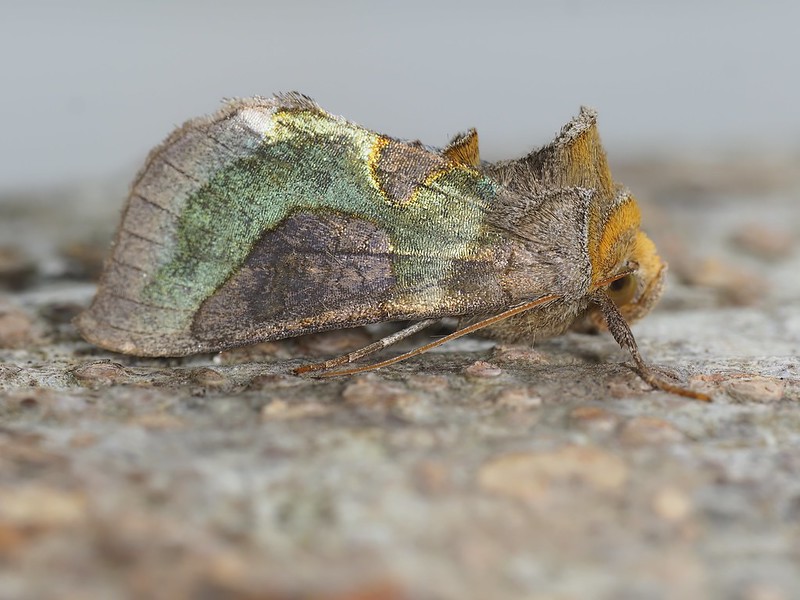
Burnished Brass – Diachrysia chrysalis
Beautiful and unmistakable, this spectacular little moth has large areas of brassy metallic colouring on the forewings. The colour of these metallic scales varies from yellow brass to greenish brass,
OM 90mm f3.5 Macro on Olympus E-M1 Mark II – f11 / 1/60 / ISO 400
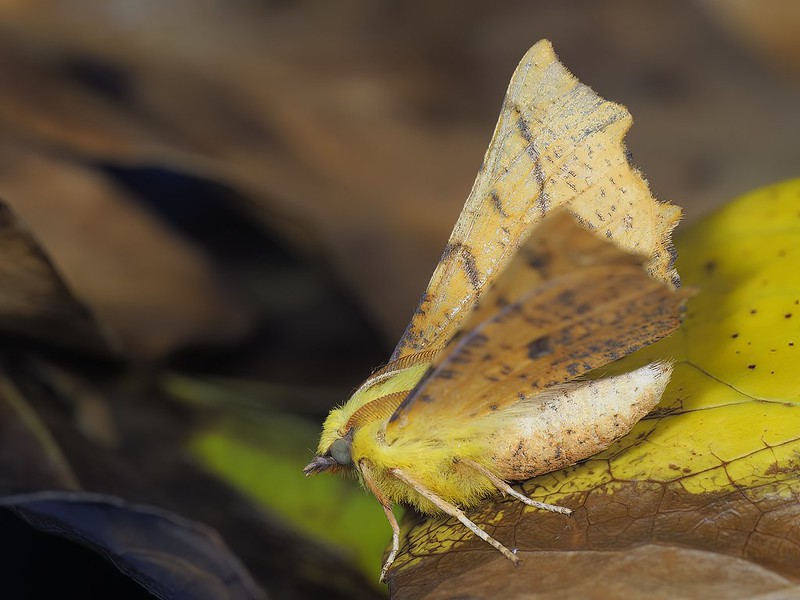
Canary-shouldered Thorn – Ennomos ainiaria
Aptly named after its canary-yellow thorax.
OM 90mm f3.5 Macro on Olympus E-M1 Mark II – f11 / 1/250 / ISO 200
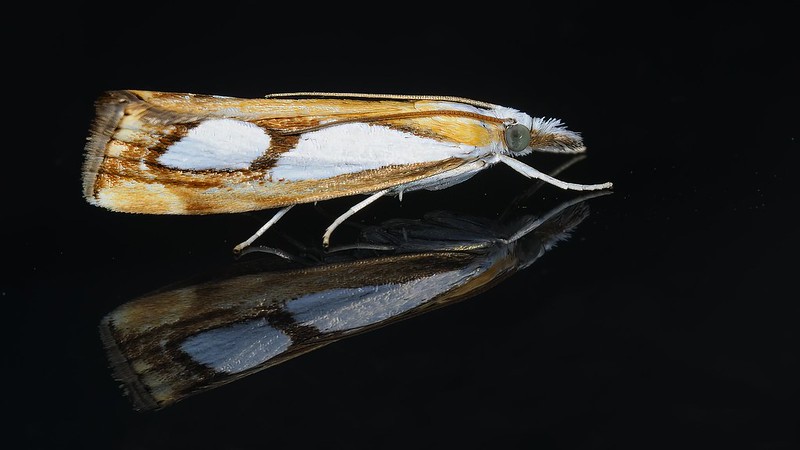
Catoptria pinella
Micro Moth only 10mm with wingspan of 18-24mm. Prefers boggy heathland, so well at home here in Kenfig. The larvae feed on grasses growing in such damp habitats, such as cotton-grass.
Olympus 60mm f2.8 Macro on Olympus M1 MarkII – f11 / 1/60 / ISO 200
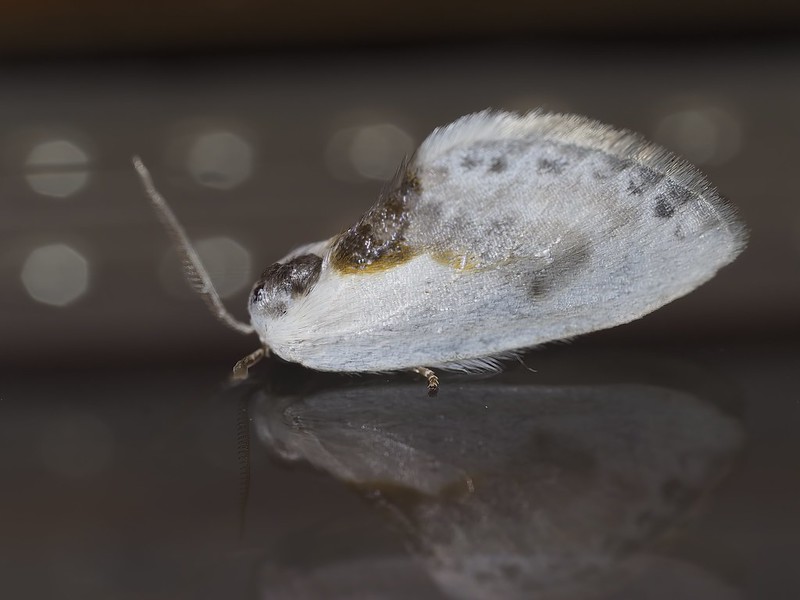
Chinese Character – Cilix glaucata
When at rest, with wings held steeply over the body, closely resembles a bird dropping – thus avoiding the attention of hungry birds.
OM 90mm f3.5 Macro on Olympus E-M1X – f11 / 1/100 / ISO 200
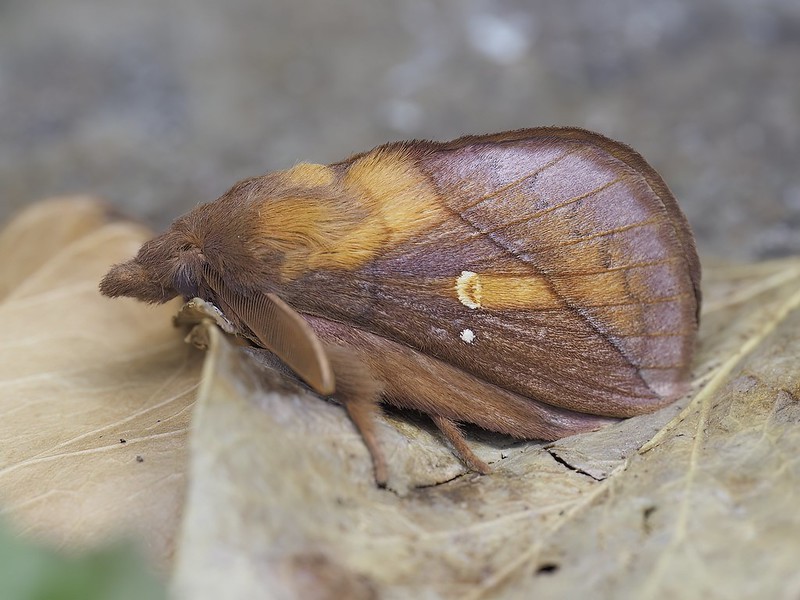
Drinker – Euthrix potatoria
The chestnut brown colouration and heavily combed antennae indicates that this is a male. The females are yellow.
OM 90mm f3.5 Macro on Olympus E-M1X – f 8.0 / 1/80 / ISO 400
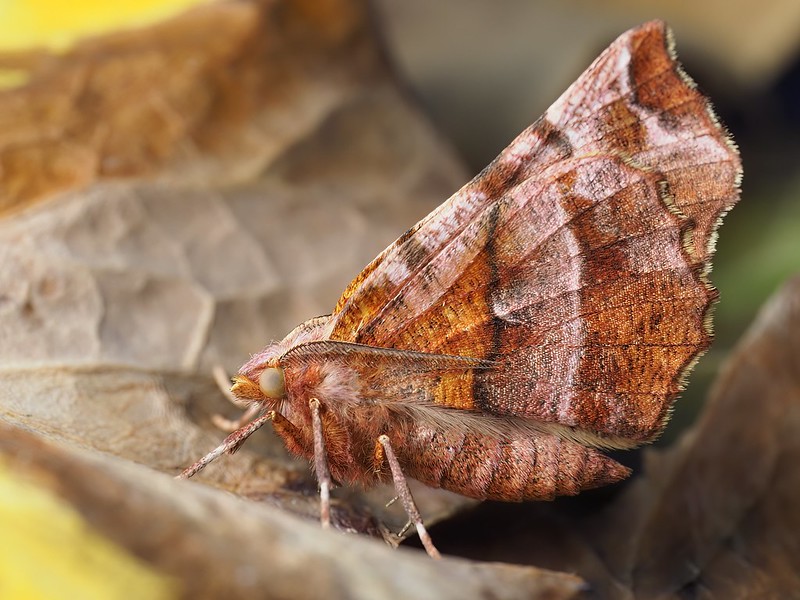
Early Thorn – Selenia dentaria
The leaf mottled colours, patterns and scalloped wing edges of the Early Thorn provide excellent camouflage against the fallen leaves.
OM 90mm f3.5 Macro on Olympus E-M1 Mark II – f11 / 1/80 / ISO 800
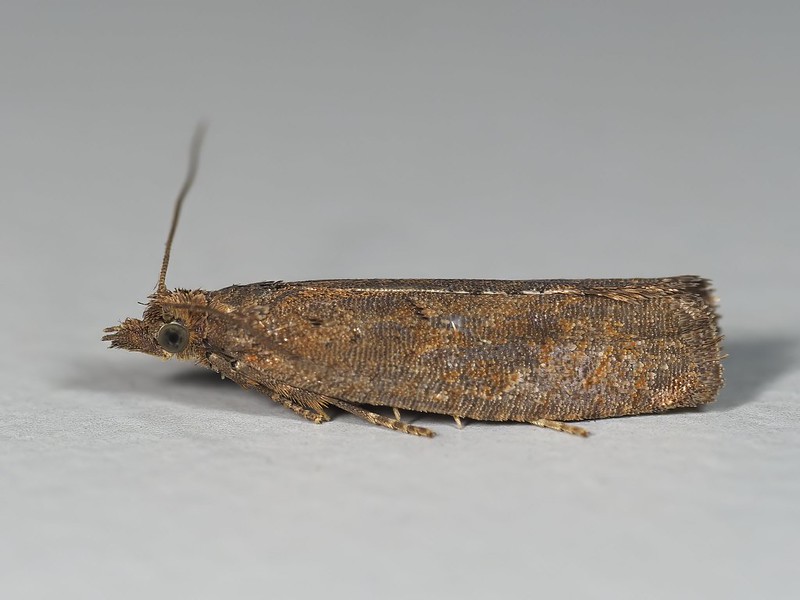
Epinotia sordidana
The adult moths, which fly from August to October, are relatively innocuous. Their plain appearance makes them difficult to identify but ID has been confirmed.
OM 90mm f3.5 Macro on Olympus E-M1 Mark II – f11 / 1/250 / ISO 200
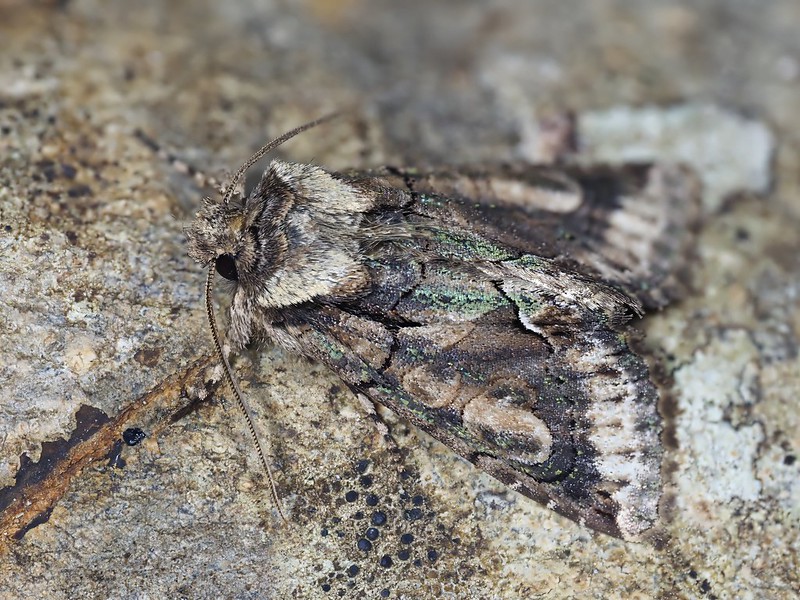
Green-brindled Crescent – Allophones oxyacanthae
The patches of metallic green scales give this moth an attractive sheen in the correct light and along with the mottled brown patches provide good camouflage.
OM 90mm f3.5 Marco on Olympus E-M1 Mark II – f5.6 / 1/50 / ISO 200
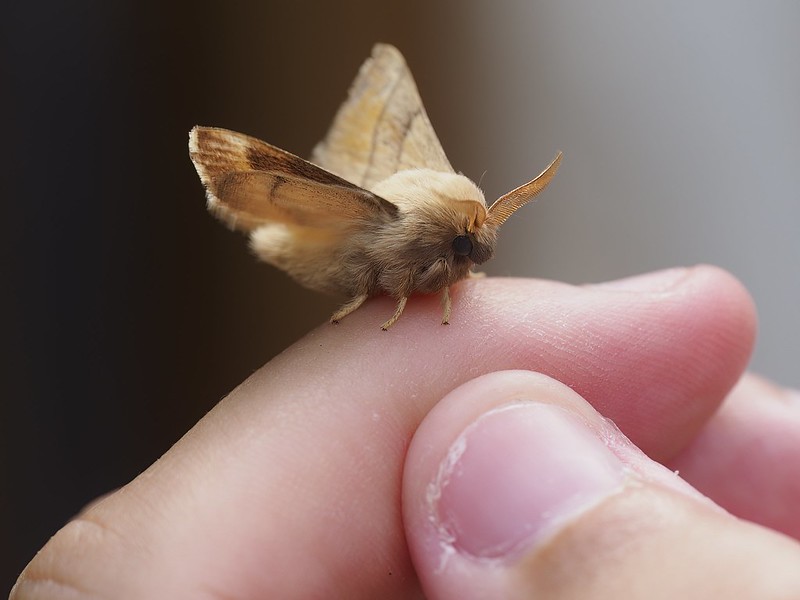
Lackey – Malacosoma neustria
Vibrating his wings and thorax in order to raise body temperature prior to take-off!
OM 90mm f3.5 Macro on Olympus E-M1X – f8.0 / 1/250 / ISO 400
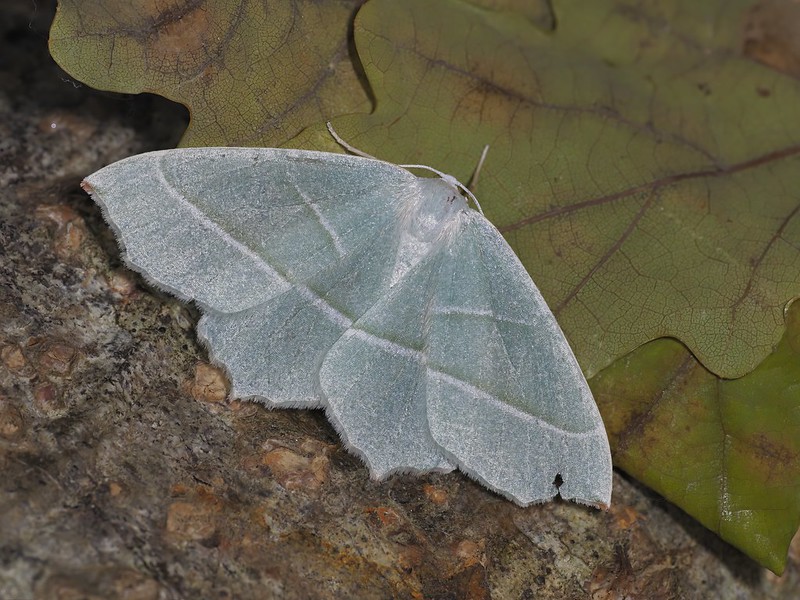
Light Emerald – Campaea margaritaria
Looks similar to other Emerald moths but has a lighter tinge of green. Look closely and you will see that the hooked forewing tip has a reddish tinge. This along with a white line that runs across the fore and hind wings are typical characteristics of this species.
OM 90mm f3.5 Macro on Olympus E-M1 Mark II – f11 / 1/60 / ISO 400
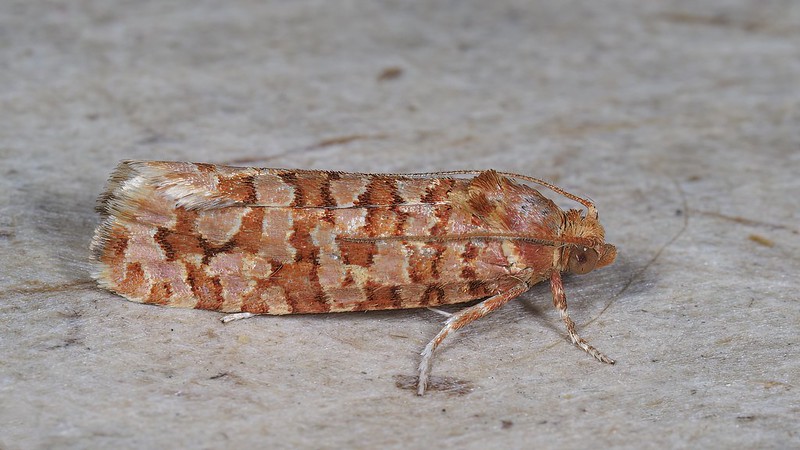
Lozotaeniodes formosana
This very attractive micro-moth is only 10mm with wingspan of 20-26mm. Shows a preference for Scots pine (Minus sylvestrnis).
Olympus 60mm f2.8 Macro on Olympus E-M1 Mark II – f11 / 1/60 / ISO 200
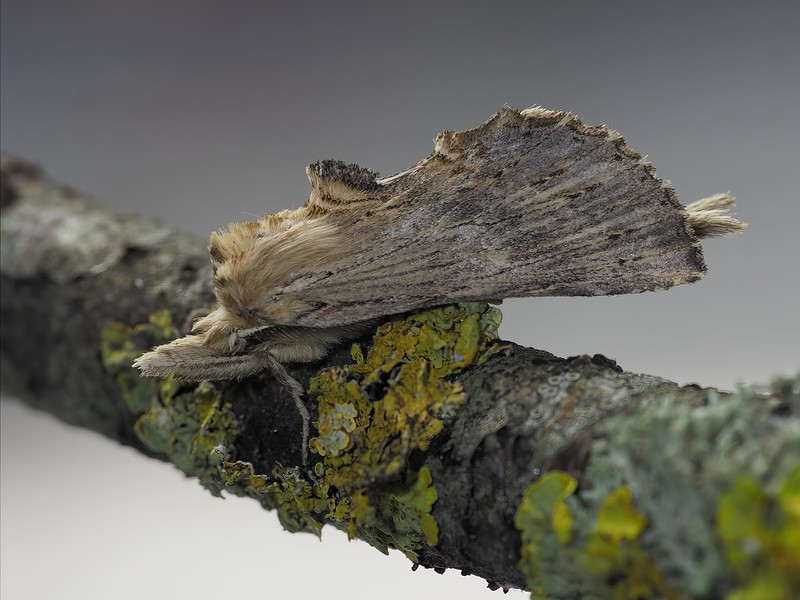
Pale Prominent – Pterostoma palpina
This moth was resting in shade, against the light. I used Olympus STF-8 twin light macro flash to provide fill light and to darken the exposure in the background.
OM 90mm f3.5 Macro on Olympus E-M1 Mark II – f11 / 1/60 / ISO 200
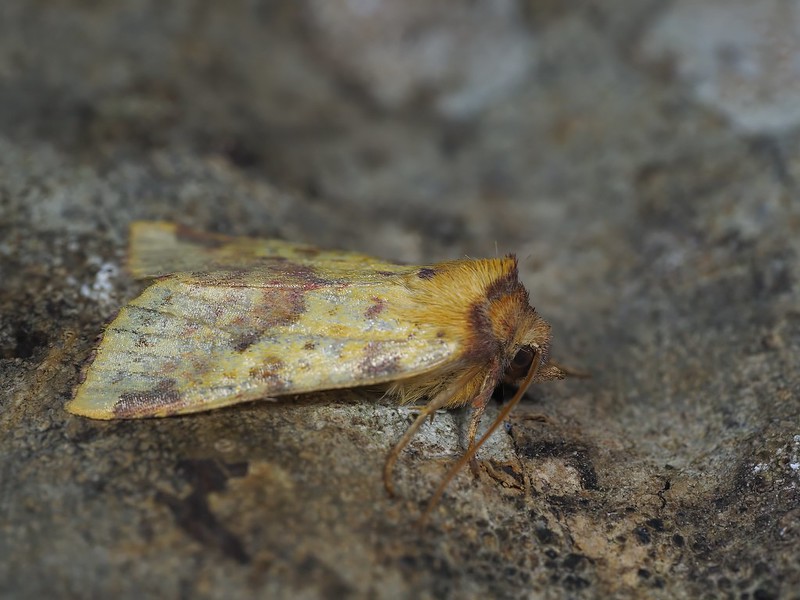
Pink-barred Sallow – Xanthia togata
This moth is most easily distinguished from other sallows by the deep red or pinkish-brown head and shoulders in contrast to the yellow thorax. The bright orange-yellow forewing is slightly hooked with deep-red or reddish-brown markings forming a bar from the leading to trailing edge.
OM 90mm f3.5 Macro on Olympus E-M1 Mark II – f11 / 1/250 / ISO 200
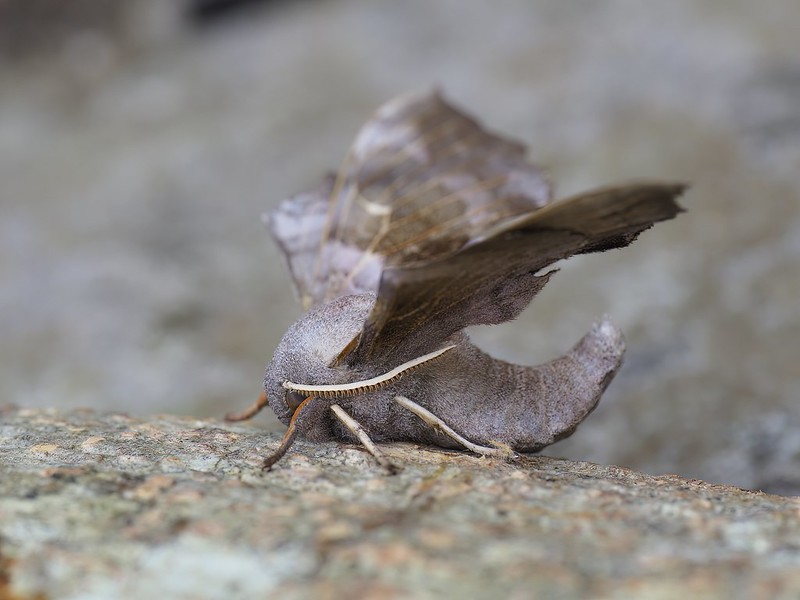
Poplar Hawkmoth – Loathe populi
Characteristic resting pose with abdomen curved up and hindwing further forward than the forewings.
OM 90mm f3.5 Macro on Olympus E-M1 Mark II – f8.0 / 1/80 / ISO 400
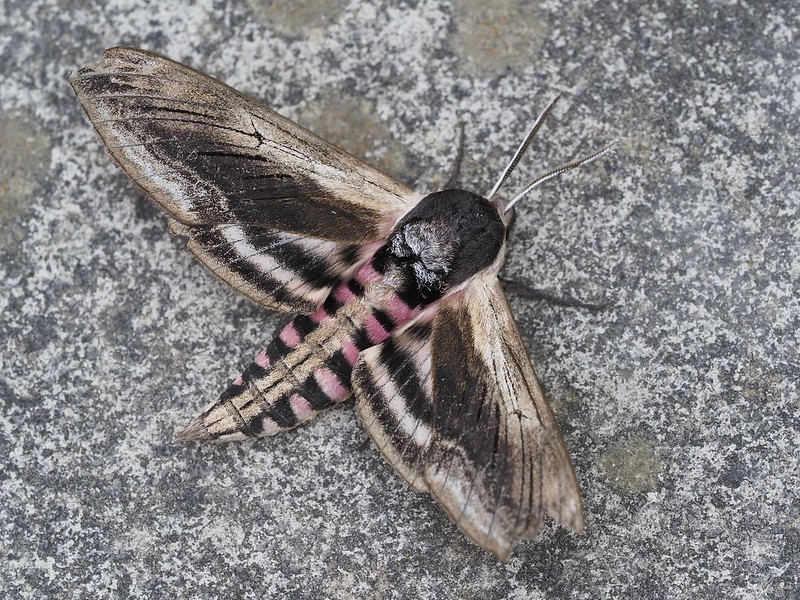
Privet Hawk-moth – Sphinx Ligustri
The UK’s largest resident Hawk-moth. Pink and black striped abdomen and hindwing; these are not always visible and the strength of the pink varies.
Olympus 40-150mm + MC-14 on Olympus E-M1X – f8.0 / 1/200 / ISO 800
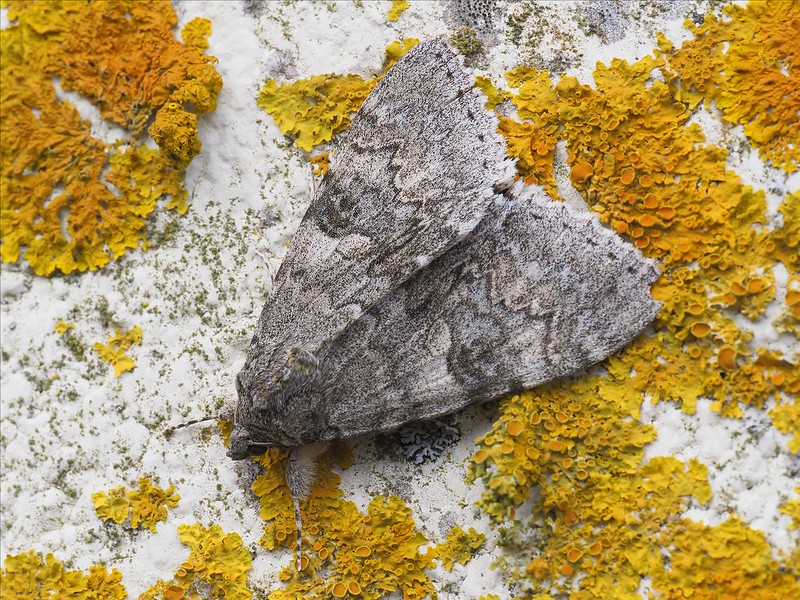
Red Underwing – Catocala Cnupta
One of the larger British moths, this specimen was found resting on lichen covered wall.
OM 90mm f3.5 Macro on Olympus E-M1 Mark II – f11 / 1/200 / ISO 400
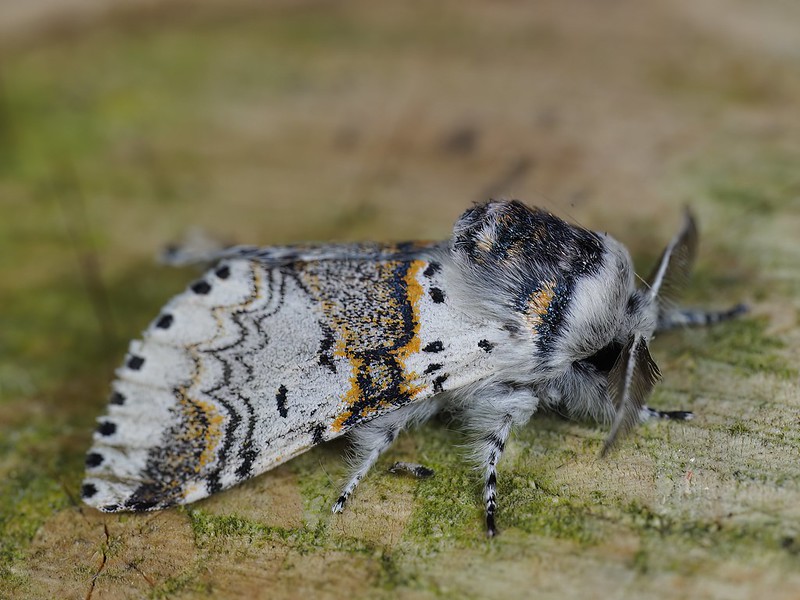
Sallow Kitten – Furcula furcula
A most attractive moth with a rich patterning of black on white is also speckled with orange.
OM 90mm f3.5 Macro on Olympus E-M1 Mark II – f11 / 1/60 / ISO 200
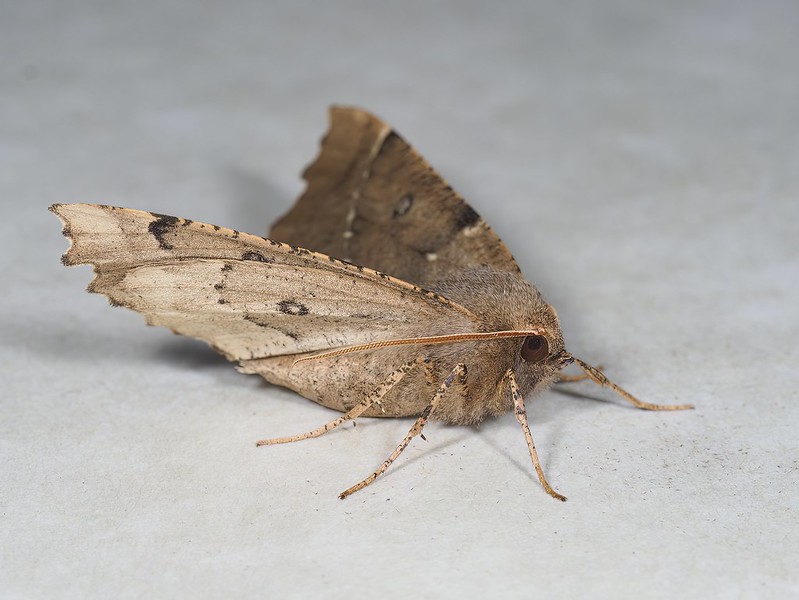
Scalloped Hazel – Odonopera bidentata
Holds wings flat and open at rest. A large moth with strongly scalloped forewing edges that are irregularly patterned. A prominent central wing spot and two dark cross-lines that are tipped and fringed with flecks and dashes. The general ground colour is green-brown or yellowish-brown with a contrasting central wing panel.
Olympus 60mm f2.8 Macro on Olympus E-M1 Mark II – f11 / 1/200 / ISO 200
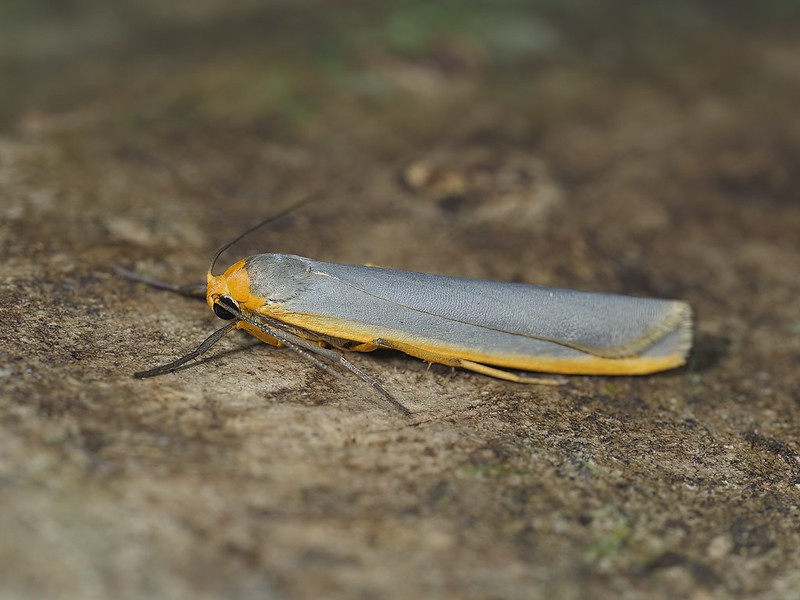
Scarce Footman – Eilema complana
Similar to the Common Footman (E. Lurideola) in appearance but holds its wings furled tightly around the body and presents a much slimmer outline that the flatter appearance of E. lurideola.
OM 90mm f3.5 Macro on Olympus E-M1X – f11 / 1/100 / ISO 200
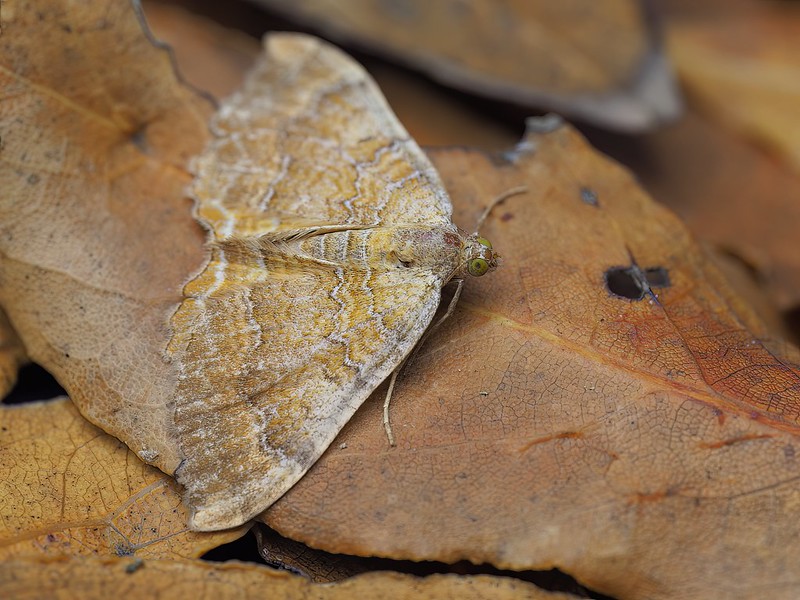
Yellow Shell – Camptogramma bilineata
Many moths rely on cryptic camouflage to protect them from predators. Some assume the colouration and shape of leaves and seek protection among them>
OM 90mm f3.5 Macro on Olympus E-M1 Mark II – f8.0 / 1/80 / ISO 200
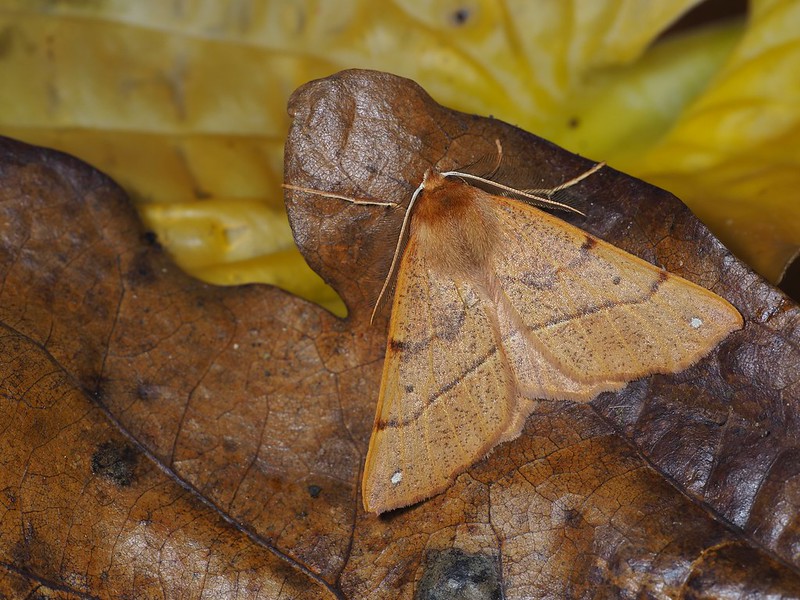
Feathered Thorn – Colitis pennaria
The Feathered Thorn is unlike any other moth likely to be flying very late in the year. The rich reddish-brown adults rest with wings flat and have a slightly hooked tip on the forewing, males have broadly gathered antennae.
OM 90mm f3.5 Macro on Olympus E-M1 Mark II – f11 / 1/250 / ISO 200
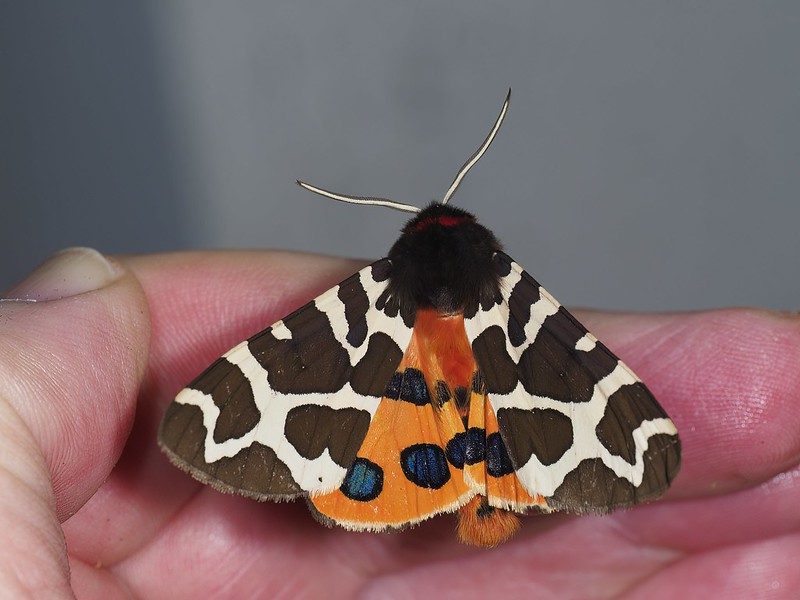
Garden Tiger – Arctic caja
The chocolate brown and white patterned forewings are beginning to open and starting to reveal the bright scarlet hindwing with black dots, which are mainly hidden when at rest.
OM 90mm f3.5 Macro on Olympus E-M1X – f11 / 1/100 / ISO 200
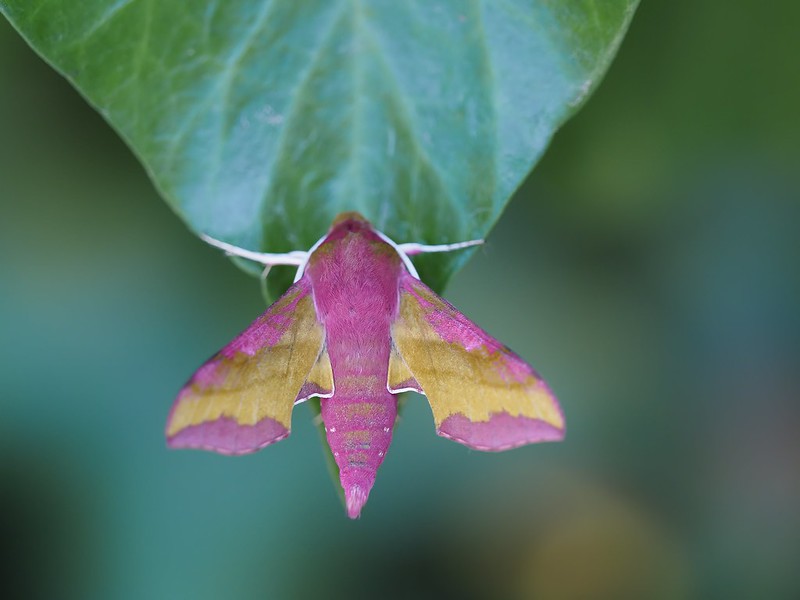
Small Elephant Hawk-moth – Deilephila porcellus
More brightly coloured, though smaller, than the Elephant Hawk-moth (D.elpenor), which has a more greenish than yellowish tinge.
Olympus 40-150mm f2.8 + MC-14 on Olympus E-M1X – f4.0 / 1/320 / ISO 800
Finally, I feel obliged to mention some of the ethical considerations that should be taken into account when moth trapping:
- Don’t ever trap on consecutive nights as catching and recatching the same moths deprives them of a chance to feed and mate.
- Avoid stepping on moths that are resting on the ground. This danger can be minimised by placing large white sheets on the ground. The moths will then rest on the sheets and can easily be seen.
- Some bulbs are hot when they’re on (mercury vapour lamps). Consider adding a guard so that moths don’t get fried. Or use bulbs such as actinic tubes that don’t get hot! The flipside is that the light isn’t nearly as bright as a mercury vapour bulb and won’t therefore attract so many moths. Nevertheless, the actinic tubes are more appropriate if you live in a suburban settings where bright lights would annoy the neighbours.
- Release your moths into some nice dense vegetation where they don’t get gobbled up by the first bird that comes along. I prefer to release them in the evening so that they don’t have so long to wait for nightfall.
CLICK HERE for my blog-post Moths Glorious Moths for how you can do your own moth trapping at home.

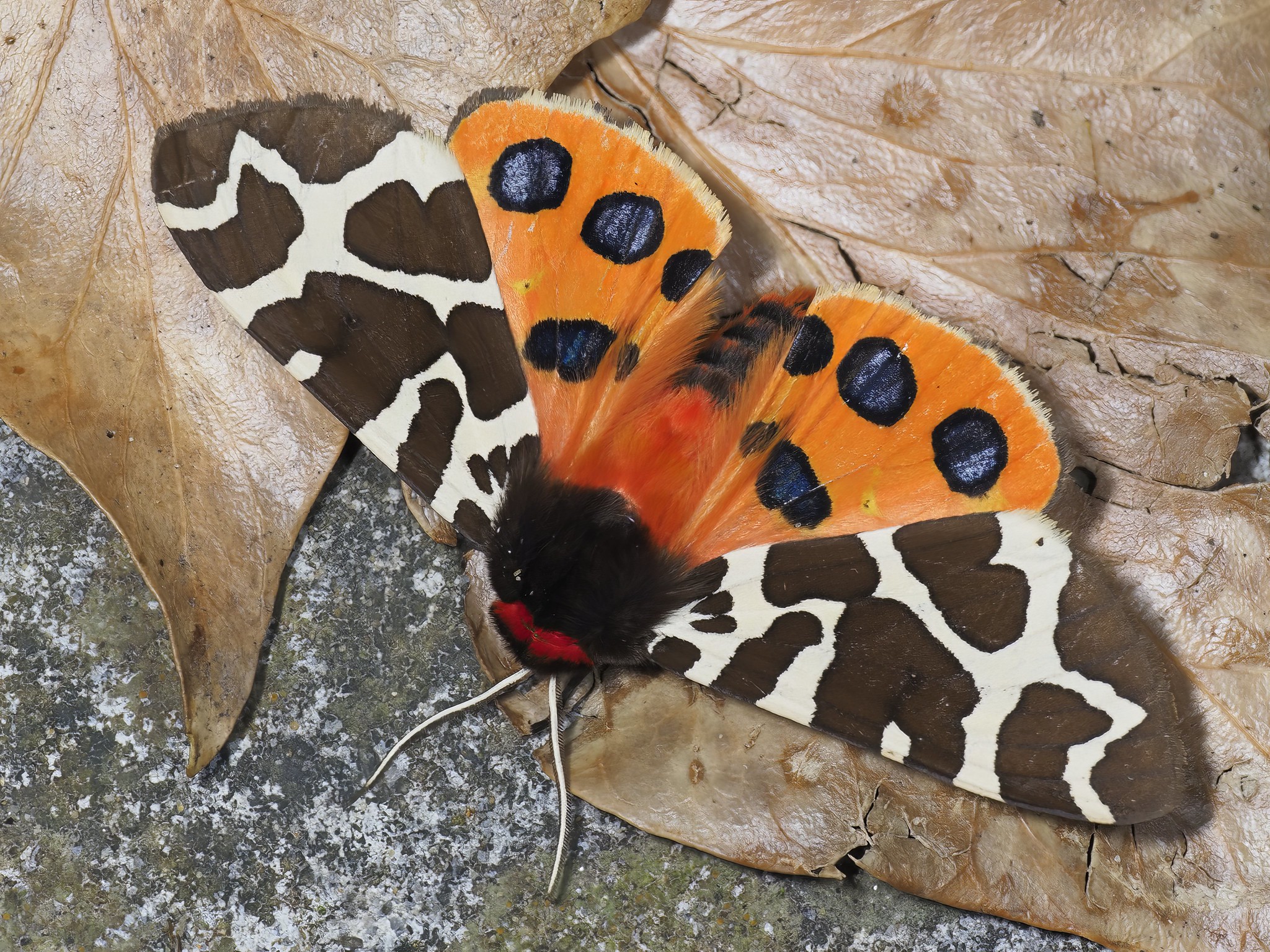

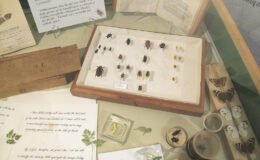
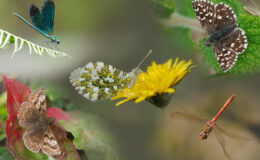
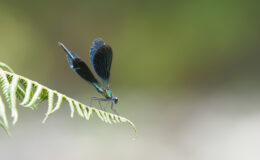
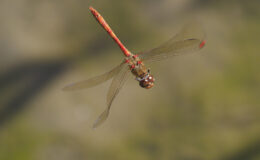
Leave a Comment